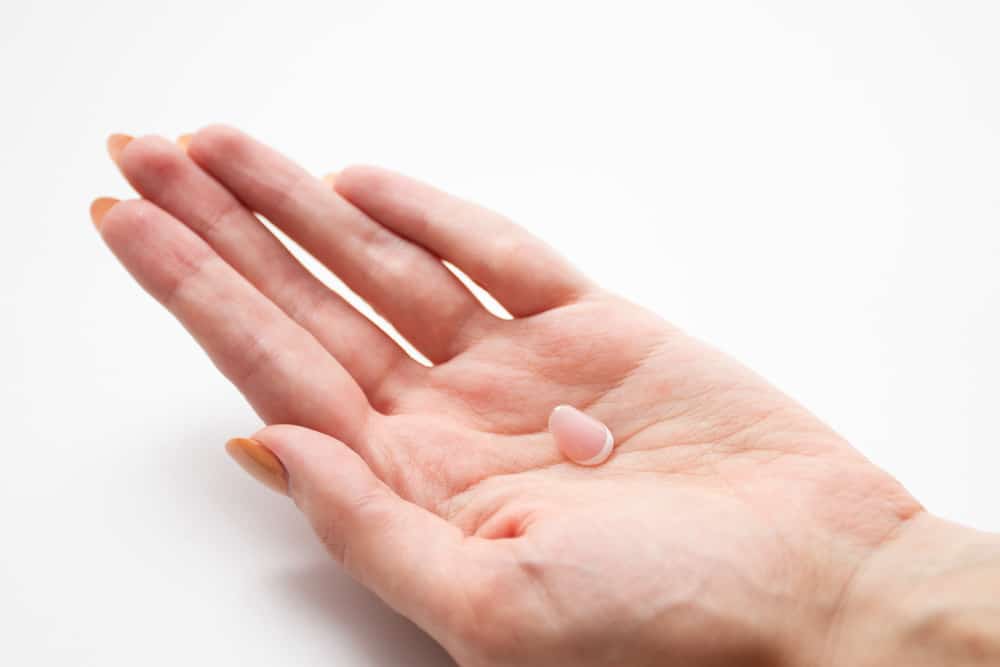
Acrylic nails are the elegant, long-lasting alternative to traditional nail polish.
Artificial nails, such as acrylics, were seen as a status symbol during their earliest iterations.
While acrylic nails may last longer than nail polish, they are prone to breaking.
What should you do once you’ve broken a piece of your acrylic nail?
My Acrylic Nail Is Broken In The Middle (How To Fix)
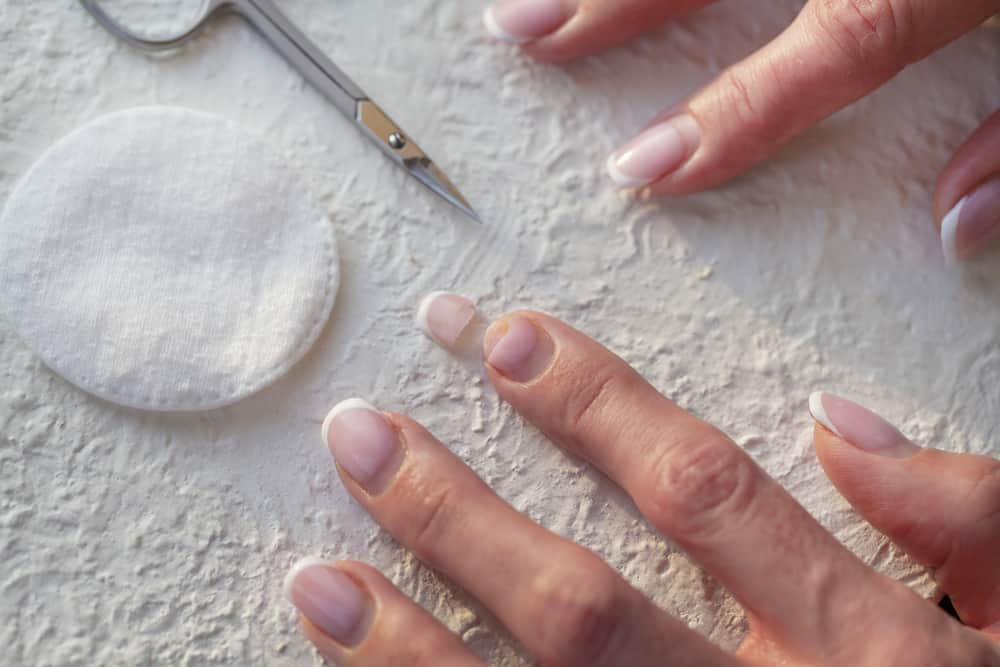
You may think that once your acrylic nail is broken, there is nothing you can do except remove it, especially if that crack is in the middle.
Depending on the length of the break, there is always the opportunity to fix it if you have the right tools for the job.
Some cracks are too large to be repaired.
If the cracks run less than halfway down the nail, then you’ll be able to fix it.
Cracks that run more than halfway down the acrylic nail are not fixable and will simply need to be replaced.
You’re going to need acrylic powder, liquid monomer, a nail file, a nail drill, and nail glue.
Most people don’t own a nail drill, but they are not hard to acquire.
While most nail guns are expensive, there are two options that are vastly better than the others, especially for beginners.
If you’re looking for the most user-friendly option, then you may want to check out Bellasonic Beauty’s 4-in-1 Rechargeable Electric Nail File.
The circular spinning motion of the nail drill makes you less likely to hurt yourself while using it.
It comes with four different file textures for using on any type of nail.
The Bellasonic nail drill costs about $80, which means it may not be in your price range.
When looking for nail drills, you may just be looking for a quick fixer.
That’s exactly what Melody Susie offers with their Sheen Portable Electric Nail Drill.
Their nail drill is a quarter of the price of the one offered by Bellasonic Beauty, but it comes with six different tips instead of just four.
Apparently, this nail drill is especially easy for those who are left-handed to use.
The drill tip even spins in both directions.
File The Nail
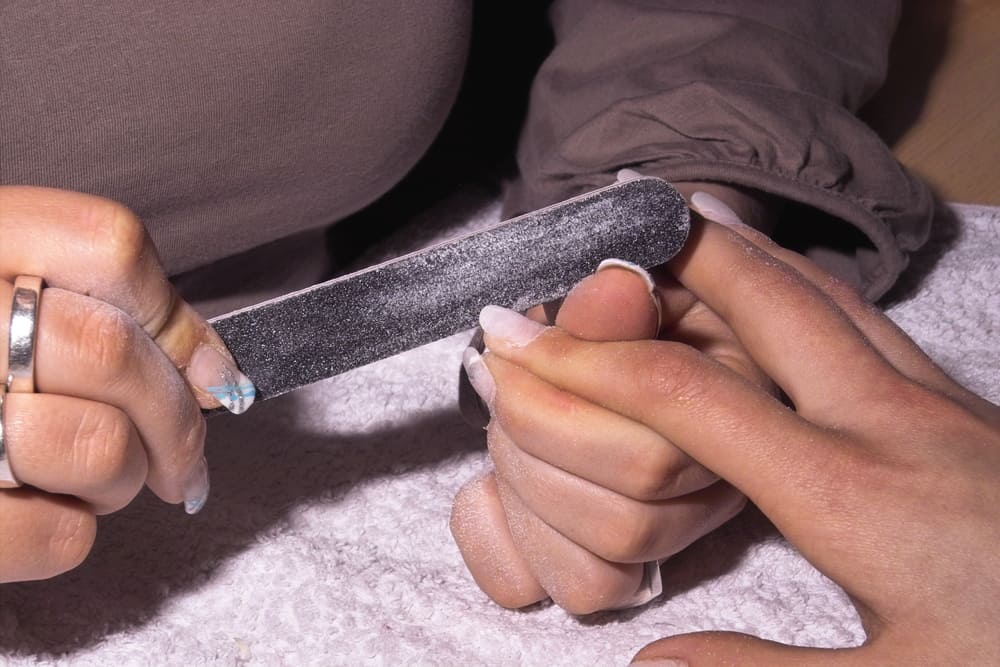
In order to fix the acrylic nail, you are going to need to file it first.
Begin your filing with your normal nail file.
You will need to file the crack down to the natural nail.
Any part of the nail that is loose will need to be filed down as well.
While you can use your normal nail file to do the whole job, it may take longer and won’t be as accurate as a nail drill.
You may not want to use a traditional nail file if the crack is small and thin.
Instead, it is best to use a cone-shaped nail drill bit to get the most accurate filing.
You will want to lay the nail drill bit parallel to the acrylic nail crack.
Quickly file the acrylic nail down to the natural nail to avoid too much heat buildup around the nail.
Before going forward with any other steps, make sure that your nail is healthy, has no redness or irritation, and is not in any pain.
Applying an acrylic nail to a broken natural nail can lead to infection.
If you notice that the natural nail is torn, this will be the time to break out the nail glue.
Make sure that you only put a thin coat inside the tear.
The glue won’t offer enough structural integrity if it is only placed on the outside of the tear, which will only lead it to breaking as soon as any pressure is put on it.
After this, you will want to file your entire nail one more time.
You are only looking to thin the surface and don’t forget to brush off any dust that may be on your filed fingernail.
Filling In The Crack
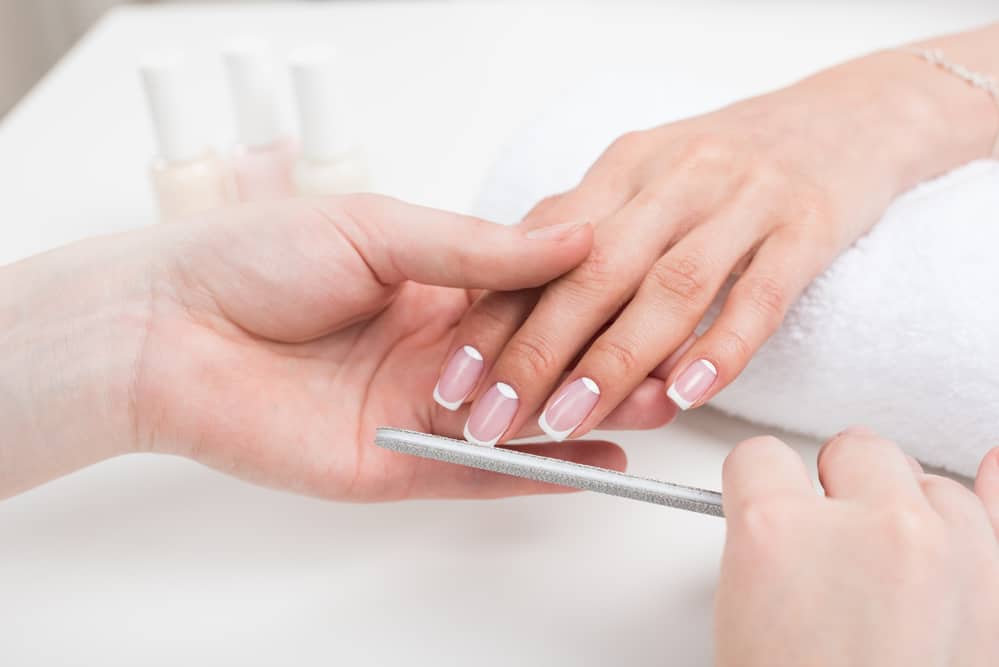
Now it’s time for the science side of this nail repair.
Using the acrylic powder and liquid monomer, you are going to need to create a “medium dry” acrylic bead to fill in the crack in your acrylic nail.
If you make the acrylic bead too wet, it will blend well with the rest of your nail and could cause you to have an allergic reaction.
The acrylic bead being too dry is also problematic because it may not hold as well.
According to NAILS Magazine, the best ratio for “medium dry” acrylic beads is 1½ to 1, liquid to powder.
You’ll know you’ve made your acrylic bead correctly by placing the bead at the tip of your brush.
The acrylic bead should gently begin to fall after 10 to 15 seconds without becoming flat or forming a pool of water at the lowest point.
The mixture is too wet if it falls too soon, is making a pool of water on the brush or nail, or it cannot keep a consistent shape.
The mixture is too dry if it is powdery.
Odorless acrylic powder and liquid monomer will need to have a different ratio applied.
Odorless ingredients will only need a 1 to 1 ratio.
They are known for being vastly more difficult to work with, but you should never add more water to them, even if it does seem to make the product more workable.
Too much water will make the acrylic brittle, which will only lead to another break in the same spot, only larger the next time.
You still don’t want your acrylic bead to be powdery because that’d be too dry and cause the same problems as if it were too wet.
When you have the perfected acrylic balls ready, you can fill in the smoothed hole that you made earlier.
Finishing Touches
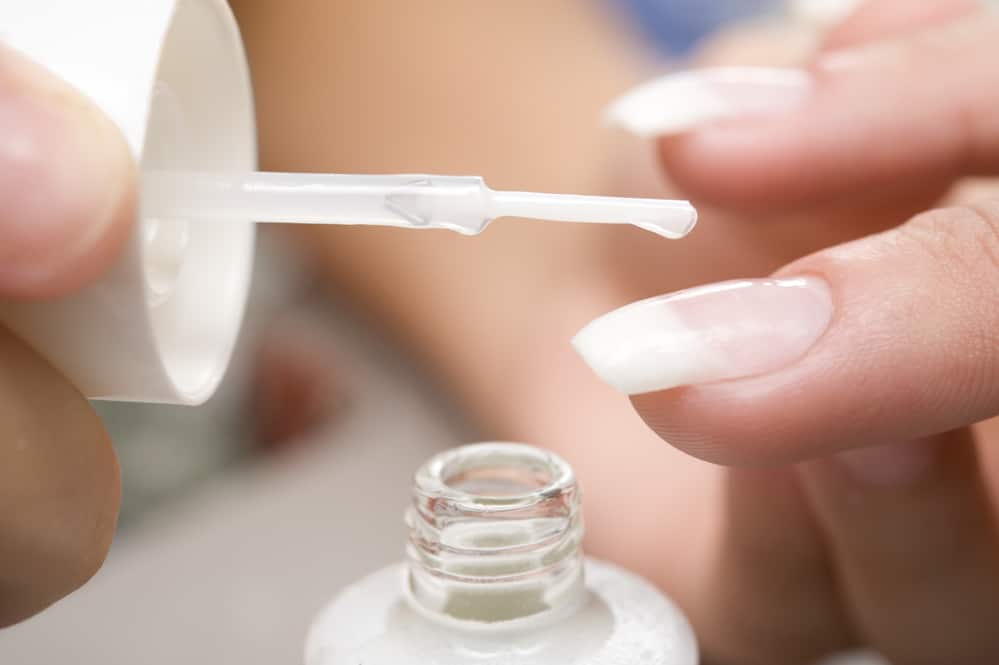
You’ll know you are done filling in the crack when the acrylic beads you have added are flush with the rest of the nail.
Only one or two beads should be enough to fill in the crevice, but if you have used too much, have no fear!
Your handy, dandy nail file is here to save the day!
File any excess acrylic until you have a smooth finish.
If you are looking to reduce the likelihood of your nail breaking again, buff it out until it is a shorter length.
After your nail is your desired shape, you may repolish it to make it match the rest of your nails.
Whenever you break an acrylic nail, if you are looking for the best results, it is always best to see your nail technician.
Repairing a broken acrylic nail requires a lot of skills that take years to master.
Don’t beat yourself up if your nail doesn’t look as good as when your nail technician does it.
Acrylic nails are an art form that takes time, patience, and most importantly, practice.
The more often you do your own acrylic nails and fix acrylic nails, the better your results will be.
Due to the technical nature that comes with acrylic nail application and repair, it is best to have your nail repaired by a licensed professional.
There are a lot of issues that could arise if the chemicals used in the process are not handled carefully.
Your local professional nail salon has rules and protocols in place in order to keep you and your technician safe.
However, when you need your nail fixed quickly or if you don’t have access to a professional nail technician at the time, you can fix your nail all by yourself.
Potential Allergens
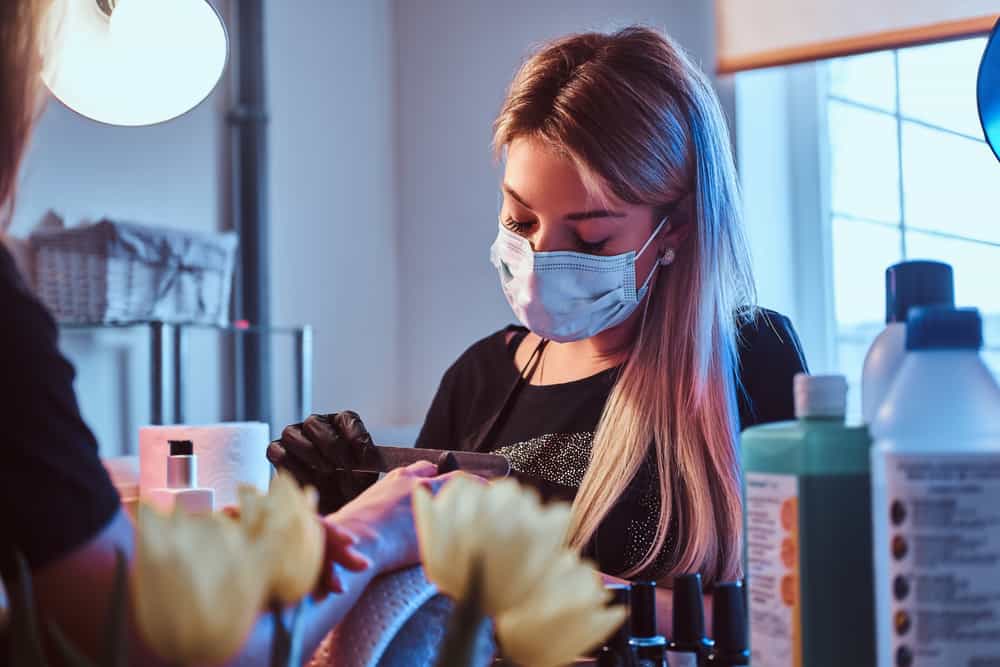
Those with sensitive skin or those who are allergic to the chemicals used while applying or repairing acrylic nails may want to reconsider doing this project at home.
Your allergic reaction could be caused by the acrylic powder or the dust that is coming off your nail while filing.
Wearing a mask and glasses can be a simple way to reduce the likelihood of a reaction.
The main chemicals that may cause an allergic reaction are 2-hydroxypropyl methacrylate, triethylene glycol diacrylate, ethyl acrylate, and hydroxyethal acrylate.
If you are allergic to nickel, you will also want to avoid any metallic color on your acrylic nails.
You will want to stop your work immediately if you notice that you are breaking out in a rash, having trouble breathing, or that your fingers are blistered.
The allergic reaction can spread anywhere you touch, and if you breathe in any acrylic powder or any of the dust that collects while filing, you could find yourself having a difficult time breathing.
An allergy to acrylics can also lead you to have a bad reaction to some eyelash glues.
The allergic reaction spreads easily and can be found in 2.4% of people, the majority of whom are women.
If you think you may be experiencing an allergic reaction, see a doctor immediately in order to help fight extreme inflammation and prevent any potential permanent scarring.
Acrylic Nails As An Ancient Status Symbol
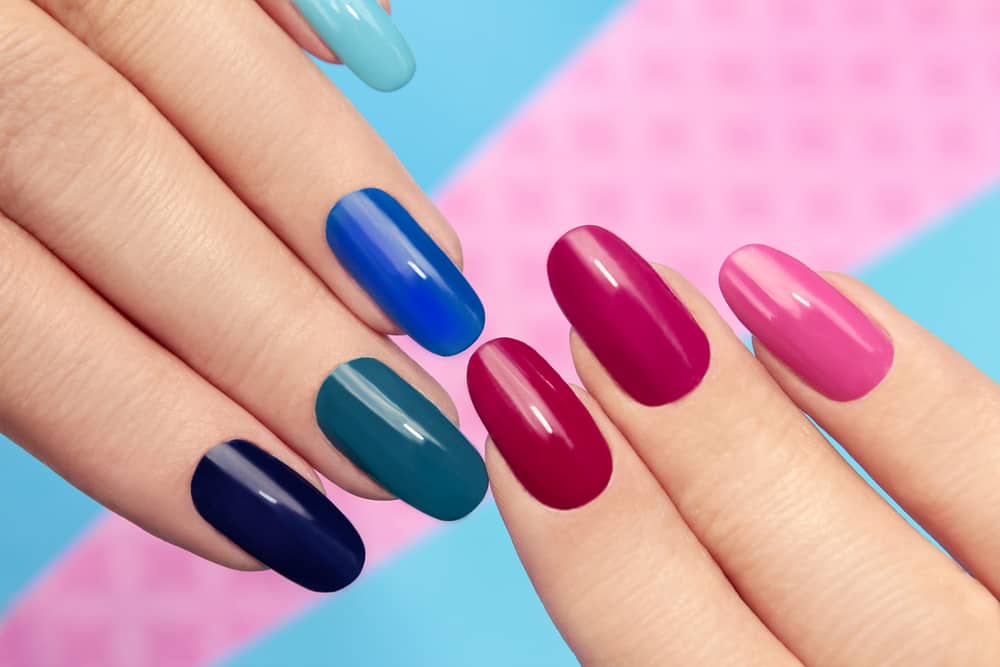
Acrylic nails aren’t just a fun way to create looks that you may not be able to achieve with your natural nails, but they are also a historical symbol of status, wealth, and power.
The first use of artificial nails will take you back to Ancient Egypt.
The women would wear nails made of bone, ivory, or even gold in order to show that they were so wealthy that they didn’t need to do any kind of manual labor that could break their nails.
If they were a part of a ruling family, they were able to paint their nails red.
Everyone else was forced to refrain from using the color and instead opted for more neutral tones.
As early as 600 BC, Chinese aristocrats created their own artificial nails with gold and silver, but they were coloring their nails even earlier in 3000 BC.
They would often choose the color of their nail based on the color that represented the ruling dynasty of the time.
The nail staining process would take all night!
Artificial nails didn’t look as natural as they do now.
Instead of the nail starting at the cuticle, the nail would cover the entire top of the finger and were almost as long as the entire finger.
They were shaped more like elongated Bugles, the crispy corn snacks from General Mills.
The old nail glue they would use to hold pieces together was made up of beeswax, egg whites, and gelatin.
Acrylic Nails In The Modern Era
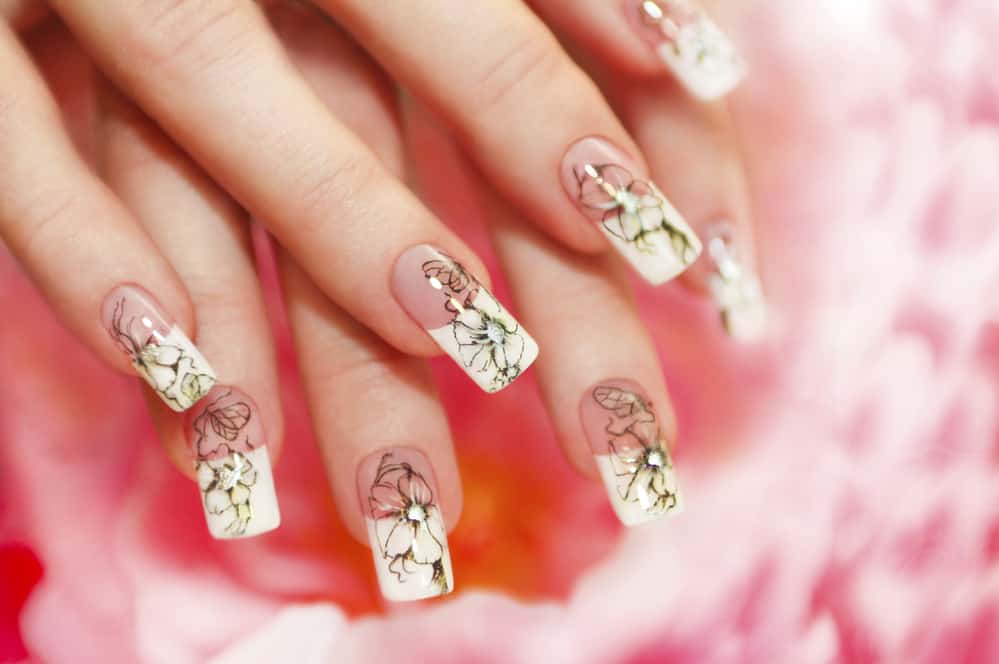
As time went on and the innovation of new nail techniques advanced, acrylic nails became more popular among more of the world.
The world’s perspective of them vastly changed, with them being seen as less and less luxurious until about the 1950s.
During the 1900s, artificial nails became increasingly popular among the middle class.
Although most women worked the day away doing the many daily chores that come with proper housekeeping, they wanted to keep their appearances pristine.
Traditional nail polishes were worn down too easily by doing chores and those accidental bumps and bruises that come in a day.
Natural-looking artificial nails with French manicures became the beauty standard for women.
Acrylic nails hit the beauty scene in the 1950s and quickly became the preferred type of nail for many women.
However, the style of acrylic nails sported by celebrities like Kylie Jenner didn’t become popular until the 1990s.
These nails, sadly, were not seen by many to be as beautiful and elegant as they truly are.
The long, bold acrylic nails of the ‘90s were seen as “cheap”, “fake”, or even “ghetto”.
What had once been a sign of wealth and power was being bashed for not being dignified enough.
In recent years, you can find people wearing bold, long acrylic nails, even in professional settings.
The biggest push that changed society’s view on long acrylic nails has been celebrity influence.
Acrylic nails aren’t even the first nail trend that celebrities have pressed to the peak of fashion.
During the 1920s, celebrities like Jane Winton and Joan Crawford modeled and praised the moon manicure.
The moon manicure had previously been seen as rebellious and too flirtatious to be worn by “upstanding” women, but the celebrity adoption of the design helped it break through society’s judgement.
The New, Creative World Of Acrylic Nail Art
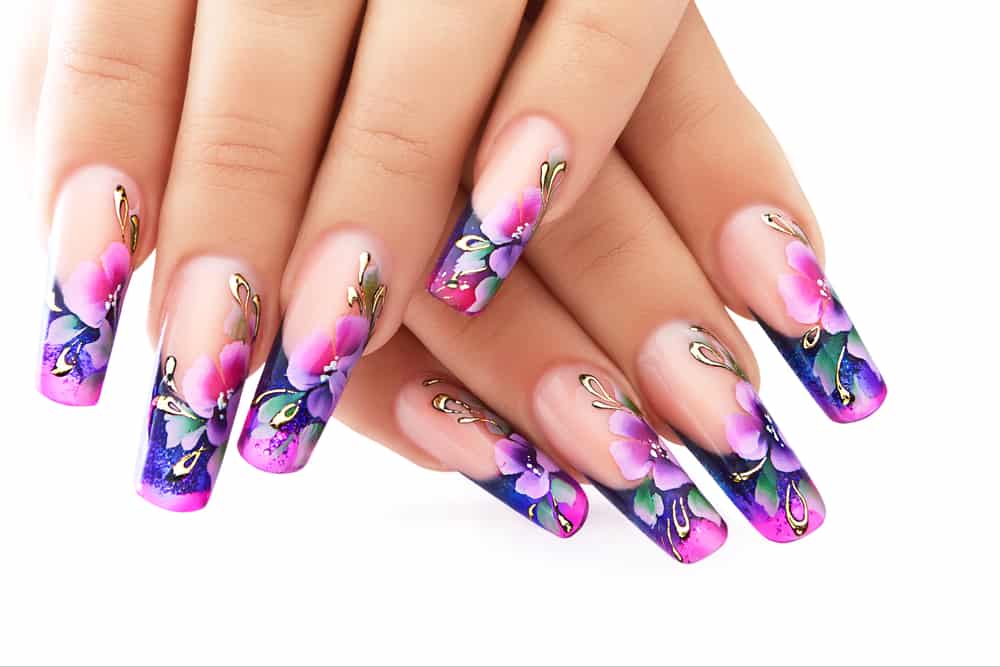
People are going beyond painting cute, artsy designs on their nails.
Modern nail artists are moving beyond two-dimensional designs and are bringing their art into the third dimension!
Nail artists are becoming sculptors and creating tiny masterpieces.
Artist @erikamarienails has found a massive amount of success and popularity on social media platforms such as Instagram thanks to her flower nail design.
This hauntingly gorgeous pattern is made with gemstones and sculpted black roses.
Extreme nail artist @ilysmnails on TikTok has some of the most interesting and eye-catching designs.
She put Orbeez and ramen noodles on her acrylic nails, but the creativity doesn’t stop there.
She has turned her acrylic nails into realistic chili peppers, snow globes, smaller hands with their own acrylic nails, ice cream cones, and even baked beans.
Have you ever looked at a lava lamp and thought to yourself, “I want that as my nails”?
Well, Nails by Mei is one step ahead of you.
This nail artist doesn’t just sculpt what is on the nail, but the nail itself.
Mei’s psychedelic nails may remind modern art enthusiasts of Wassily Kandinsky’s Composition VII.
Acrylic Nails And Those Who Wear Them Proudly
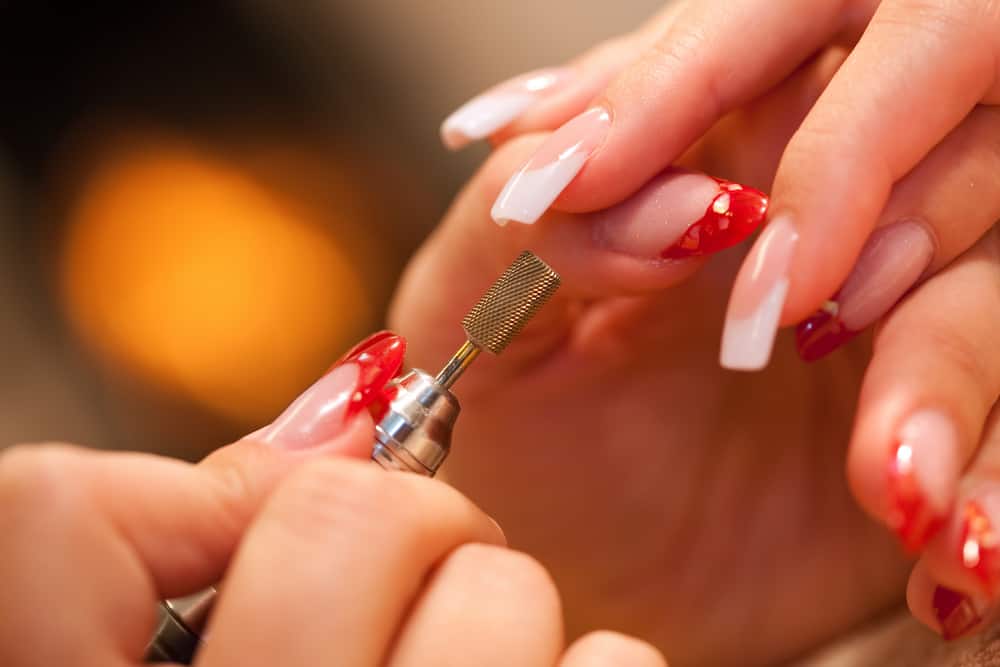
There is an acrylic nail design for everyone, whether you’re spending your day by the pool or by the computer.
Acrylic nails are just as unique as those who wear them.
While fixing them on your own can be extremely difficult to master, the beauty that comes from well done acrylic nails is undeniable.
Acrylic nails have been traditionally worn by royalty and the social elite, but over time, they became the favorite nail choice of many.
Now, they have even become another form of self-expression and an art form.
Although society’s perception of acrylic nails has varied through the generations, as time goes on, people are beginning to learn that maybe judging someone by their nails isn’t the best idea.
Those who choose to wear their nails however they desire without giving a single care in the world to what others may think have proven that they are bold enough to accomplish anything they set their minds to.
Leave a Reply